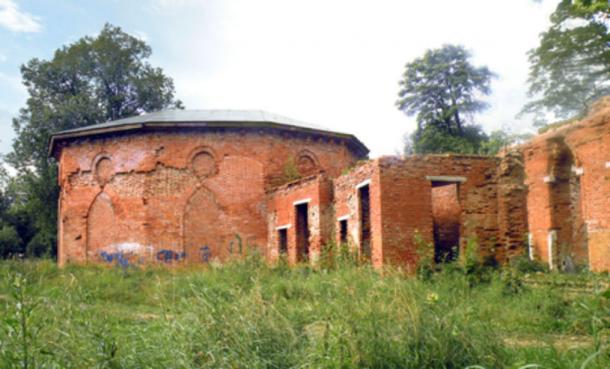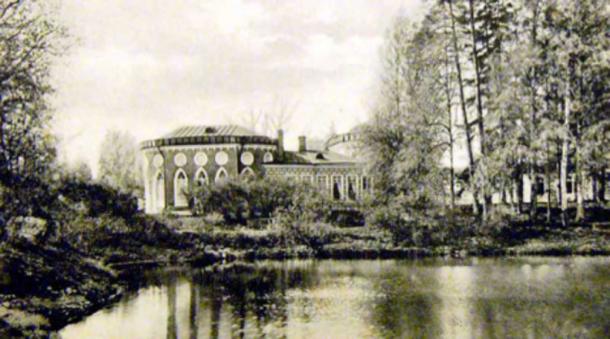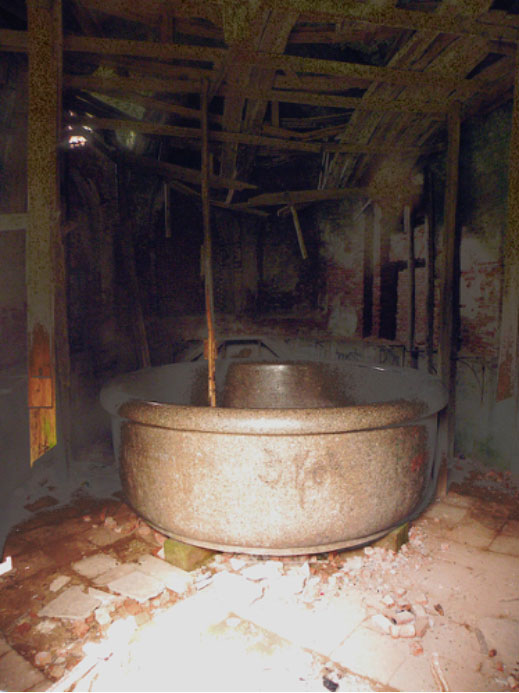
Why Was Such a Colossal Bath Tub Built for Tsar Alexander I?
Babolovo (known also as Babolovka) Palace is a historical building located near the city of St. Petersburg, Russia. This palace was built in towards the end of the 18 th century, during the reign of Catherine II of Russia (also commonly known as Catherine the Great). One of the most curious objects to be found in this palace is a giant bath made of granite, known as the ‘Tsar Bath’, which was added to the building some decades after its construction. Today, the palace, which is part of the Babolovo Park, is in ruins. Nevertheless, there have been plans to preserve the palace from further destruction, as well as to develop the park surrounding it.

The ruins of Babolovo palace (CC by SA 3.0)
Babolovo Palace is located in the town of Tsarskoye Selo (meaning ‘Tsar’s Village’), which is about 24 km to the south of St. Petersburg. The palace is situated close to the Catherine Palace and the Alexander Palace, both of which are renowned imperial residences from the time of the Russian Empire. In 1780, the grounds adjoining that of the Catherine Palace were presented by Catherine the Great to Grigory Potemkin, a Russian nobleman who was also the empress’ favourite at that time.
A Rendezvous for Lovers?
Initially, a temporary wooden palace was built, which, according to one source, served as a rendezvous point for lovers. Between 1782 and 1785, the building was replaced by a stone one, which was designed by Ilya Neyelov (who also designed the bath pavilions in the neighbouring Catherine Park). This new structure was built in the Gothic Revival style, and served essentially as a summerhouse. Neyelov’s creation was a single-storey building with seven rooms, each of which gave access to the park surrounding the palace, and an octagonal tower.
Babolovo Palace was not used for a very long time, as it was abandoned in 1791 (incidentally, this was also the year of Potemkin’s death). One factor contributing to the palace’s demise is its remoteness, which meant that it was very seldom visited. It was only several decades later, during the 1820s, that there was a revival in the Babolovo Palace.

Babolovo Palace, PostCard of beginning of 20th century. (public domain)
A Palace for a Tsar
It was during this decade that the Babolovo Palace was renovated, under the auspices of Tsar Alexander I, the grandson of Catherine the Great. The tsar is said to have liked the palace very much, and it has been rumoured that it was there that he used Babolovo Palace for his trysts with Sophia Velho, the daughter of a court banker. The most significant change that was made to the palace is perhaps the addition of a colossal bath tub, known also as the ‘Tsar Bath’.
The Colossal Bath
According to one source, the bath tub was originally a chunk of granite from one of the Finnish islands. This piece of granite weighed over 160 tonnes, and a team of masons, led by Vasily Sukhanov, was given the task of turning the rock into a bathtub. It took Sukhanov 10 years to get the job done, and the resulting piece of work is a true masterpiece. The Tsar Bath has a height of 1.96 m, a depth of 1.52 m, and a width of 5.33 m. The walls of the tub are 45 cm thick, and its weight was reduced from the original 160 tonnes to 48 tonnes. 8000 buckets of water (about 12 tonnes) could be contained in this bath. Given the immensity of the bath, the workers renovating the palace had to first place the tub into its designated room before having the walls and roof constructed.

The famed Tsar Bath in the dilapidated ruins of Babolovo Palace (CC by SA 3.0)
During the Second World War, Babolovo Palace was badly damaged. The Tsar Bath, however, survived, and the invading Nazis even attempted to have the bath tub transported back to Germany. They were, however, unsuccessful, and the extraordinary object was left where it was. Babolovo Palace has remained in ruins ever since, although plans have been announced recently for conserving the remains of this structure and to develop the surrounding park.
Top image: The Tsar Bath of the Babolovo Palace. Photo source: Wikimedia.
By Wu Mingren
References
en.pointerst.com, 2017. Babolovo Palace. [Online]
Available at: https://en.pointerst.com/babolovskij-dvorets
English Russia, 2011. The King of All Tubs. [Online]
Available at: http://englishrussia.com/2011/01/17/king-of-tubs/
okoGuide, 2013. Tsar-Bath (Babolovo Basin), Pushkin. [Online]
Available at: http://okoguide.com/object.php?id_prod=8608&id_lang=2&id_city=2
RusUE.com, 2016. Derelict palace with the famed “Tsar Bath”. [Online]
Available at: http://rusue.com/derelict-palace-with-the-famed-tsar-bath/
Saint Petersburg Encyclopaedia, 2017. The Babolovo Palace (an ensemble of the Babolovo Park). [Online]
Available at: http://www.encspb.ru/object/2846504699?lc=en
Sygic Travel, 2017. Babolovo Palace. [Online]
Available at: https://travel.sygic.com/en/poi/babolovo-palace-poi:47800
The Tsarskoye Selo State Museum-Preserve, 2015. Babolovo Park. [Online]
Available at: http://eng.tzar.ru/info/info-events/title/?id=3561















